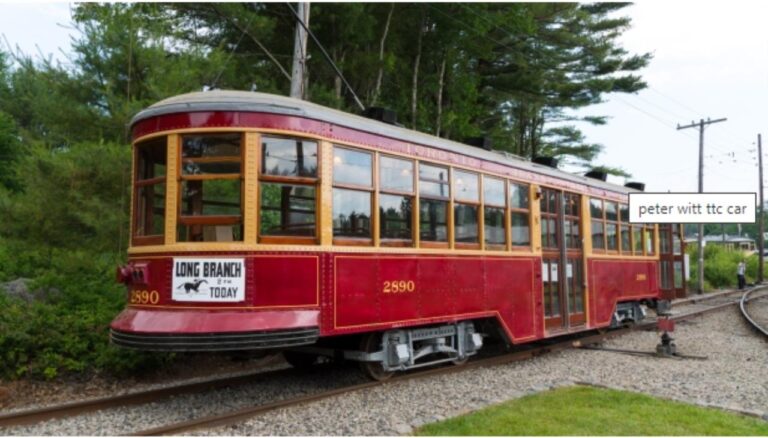Officials in Detroit recently announced that they would be buying train cars belonging to the TTC’s decommissioned Scarborough RT for use on a rapid transit line in that city.
But it is not the first time that TTC vehicles will end up far from Toronto after they are taken out of service.
Some end up in museums spread all across North America and others even get re-used as public transit in far flung cities.
“We know the TTC brand holds a special places in the hearts of Torontonians and it’s great to see our brand in other places too,” Stuart Green, spokesperson for the Toronto Transit Commission (TTC), told CTV News Toronto in a statement.
Here are some places decommissioned streetcars have ended up and how they got there.
AT MUSEUM
Anyone who wants to see a piece of home when travelling abroad can head over to several cities in the United States.
The Illinois Railway Museum (IRM) in Union, Illinois, has a 1979 TTC streetcar, which was acquired in November 2019. It also has a trolley bus, bus 9339.
“A couple of us went up there to Toronto and met with folks there at the TTC and arranged for the car, and the car was donated to us,” Richard Schauer, a volunteer at IRM, told CTV News Toronto, adding they had reached out to the transit agency to see if they could have one.
Visitors can walk right up to the streetcar, Schauer says, and the museum is still re-gauging it so it can eventually be placed on its one-and-a-half-kilometre loop that can be taken for a ride.
Over in Kennebunkport, Maine, visitors can head over to the Seashore Trolley Museum to see the 2890, also known as the “Peter Witt” car, named after the Cleveland, Ohio, transit commissioner who designed them.
“Seashore, building its collection, tried to get cars from the major street car operations in North America, looking at what were major streetcar operators back in the peak of the streetcar era like 100 years ago, and of course, Toronto would be one of those,” Seashore Trolley’s historian Richmond Bates told CTV News Toronto.
“We weren’t able to get the Peter Witt cars when they were first being retired, but then Seashore had another Canadian car the museum wasn’t doing much with, that was an interurban car from Lake Erie and Northern […] so in 1999, Seashore arranged a trade with Halton County [for the Peter Witt car].”
Then in early 2020, the TTC donated two streetcars to Seashore, numbers 4068 and 4133, though the light-rail vehicles are currently being re-gauged.
Still in the U.S., TTC streetcars can be found at the National Capital Trolley Museum in Colleyville, Maryland, and the Shore Line Trolley Museum in East Haven, Connecticut.
About an hour west of Toronto, at the Halton County Radial Railway Museum, visitors can see various TTC streetcars.
Douglas McOuat, a volunteer at the Milton, Ont.-based museum for the last 52 years, told CTV News Toronto that the TTC generally donates some streetcars to them.
“We’re very close with the TTC’s engineering department, so they let us know when it’s appropriate for us to ask for streetcars,” McOuat said. The streetcars then get trucked over to the museum, McOuat says, which can cost about $20,000 to get them shipped from Toronto.
“Our collection goes back. The oldest piece in our collection is a horse-powered bus, they call them omnibuses, from 1879, and then our newest streetcars who were just retired, the CLRVs, retired in 2019. And, our oldest running car that you can go for a ride on at the museum is from 1893,” McOuat said, adding that the last vehicle was built by the TTC as a replica.
AS PUBLIC TRANSIT
TTC streetcars are not solely reserved for Toronto’s streets and commuters – at least two places in the U.S. use old streetcars as public transit.
A spokesperson from San Francisco Municipal Transportation Agency (SFMTA) confirmed to CTV News Toronto that Muni, its transit network, acquired 11 former Toronto Presidents’ Conference Committee (PCC) streetcars in the 1970s, originally from Kansas City, for brief service. PCCs first hit Toronto’s tracks in the late 1930s, and were in service until 1995.
“They essentially kept this same maroon and cream paint scheme, with Muni’s ‘cable car ribbon’ logo replacing the ‘TTC’ logo,” Stephen Chun from SFMTA said in a statement. “Now, this handsome ‘Red Rocket’ is back on San Francisco’s streets to stay.”
The largest number of PCCs currently run in Kenosha, Wisconsin, over 920 kilometres away from Toronto. The city purchased five cars around 2000, rebuilt them and put them in service on a downtown circulator route.
As a way of paying homage to the PCC’s heritage across North America, Kenosha repainted and refurbished its cars in a variety of classic liveries, with the 4610 representing the TTC.
Source: cp24
